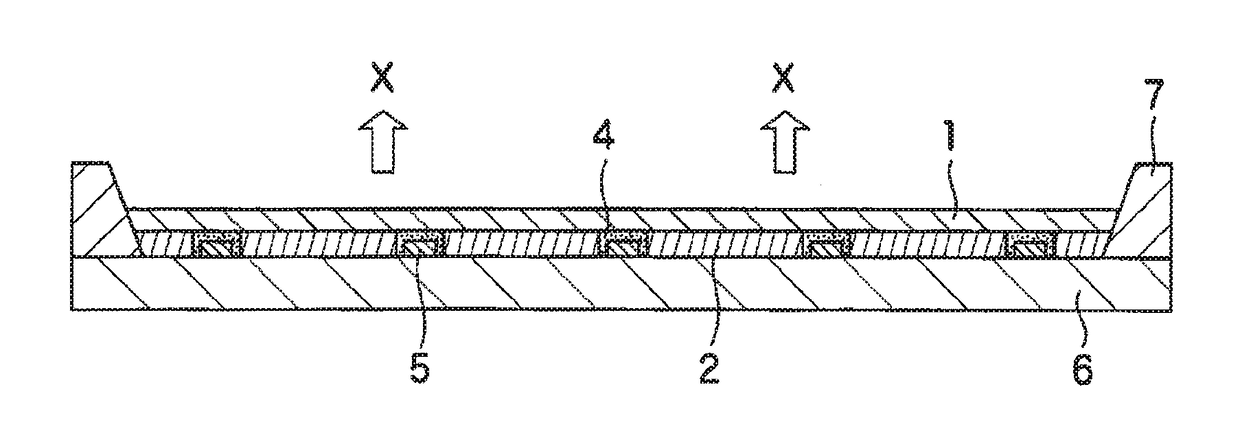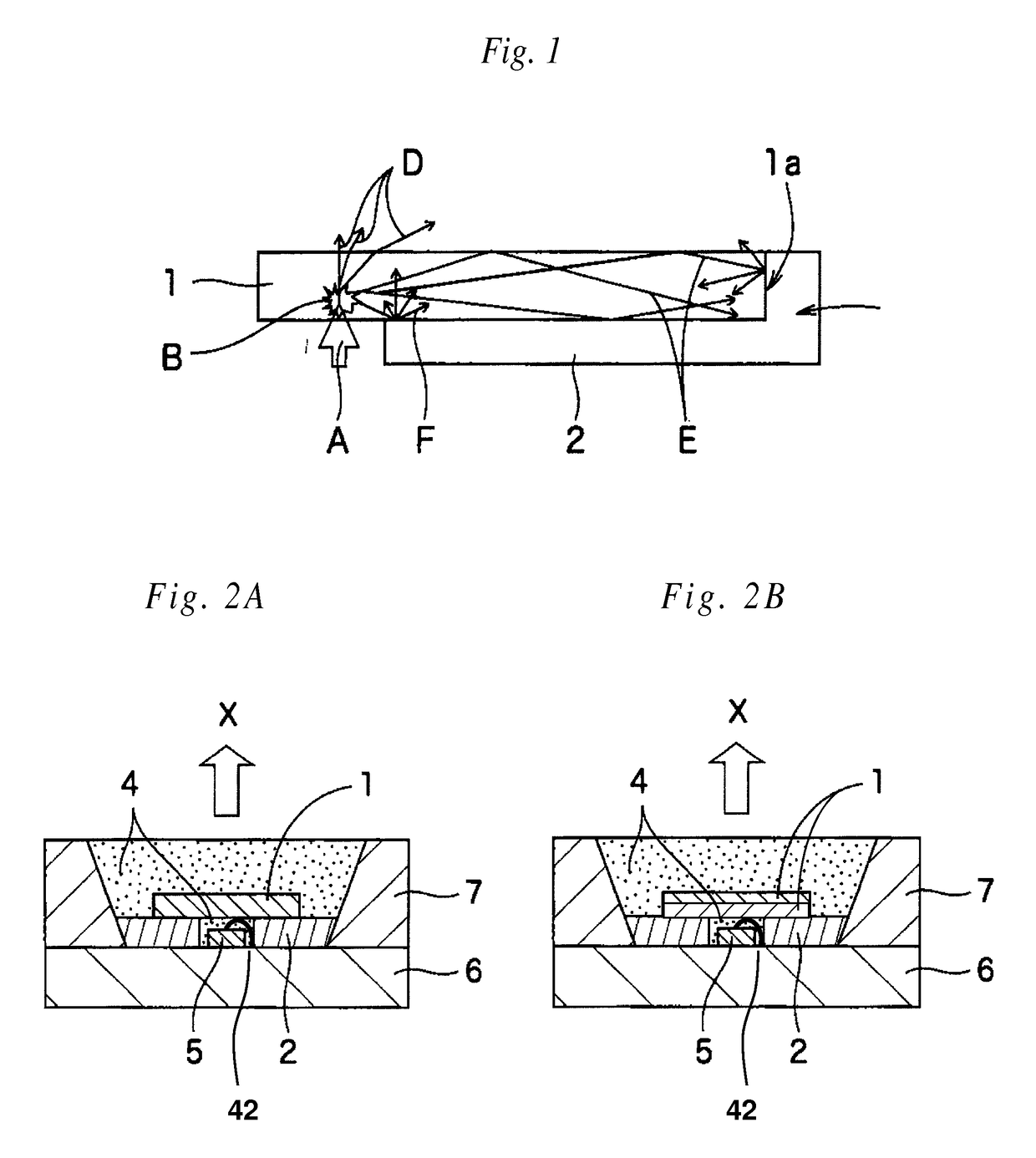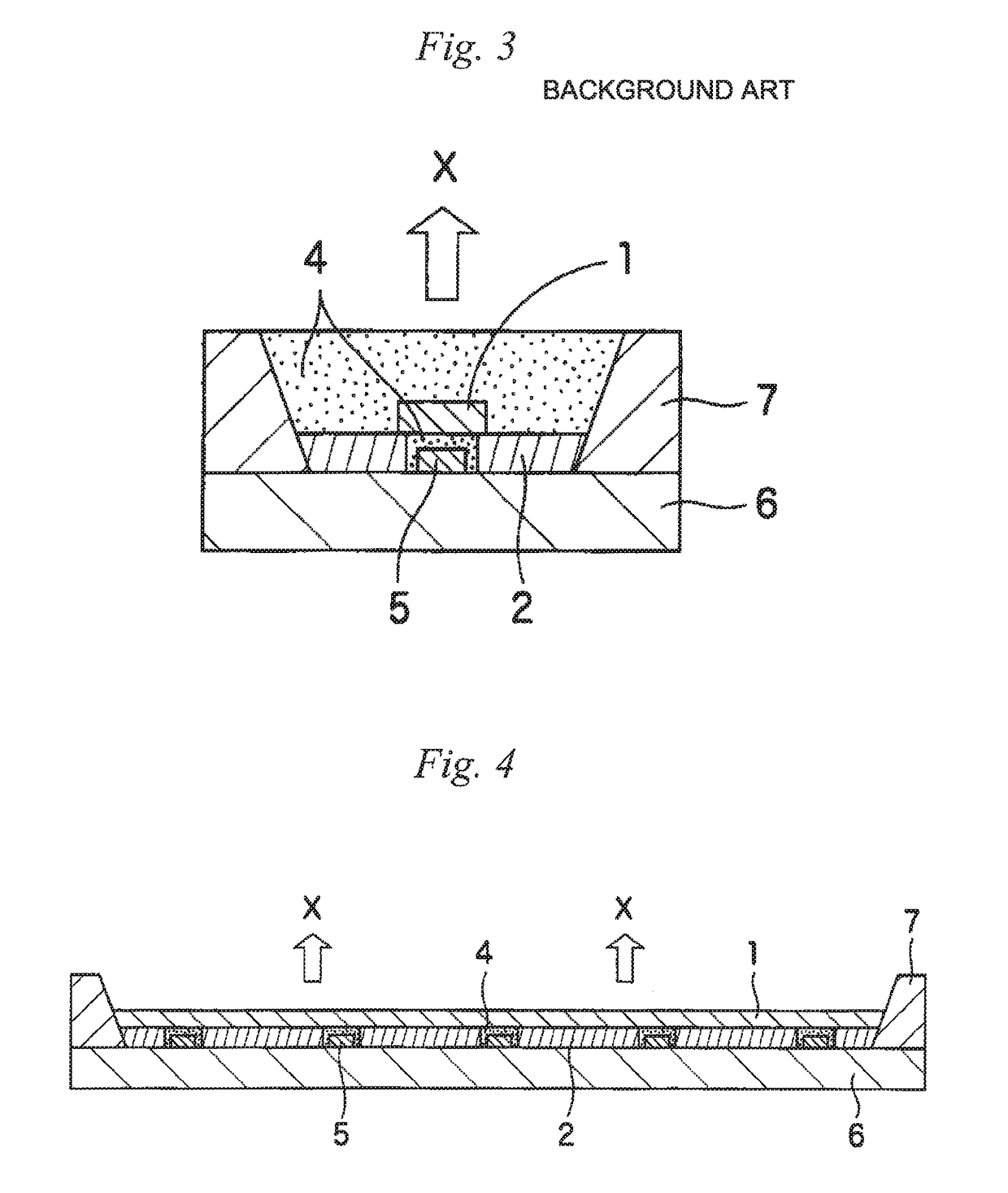Semiconductor light emitting device
a technology of light emitting device and semiconductor, which is applied in the direction of semiconductor devices, basic electric elements, electrical equipment, etc., can solve the problems of insufficient improvement of light extraction efficiency and restricted effect, and achieve excellent light extraction efficiency, light extraction efficiency can be remarkably enhanced, and back scattering light can be reduced
- Summary
- Abstract
- Description
- Claims
- Application Information
AI Technical Summary
Benefits of technology
Problems solved by technology
Method used
Image
Examples
embodiment a
[0076]The phosphor plate is obtained by molding the phosphor material into a desired shape and sintering it under heating and is also referred to as a polycrystalline sintered body because of the production method. As the polycrystalline sintered body, for example, translucent ceramics as described in JP-A-11-147757 and JPA-2001-158660 can be employed. The translucent ceramics have already been in practical use as solid laser materials and highly durable housing materials for high-pressure sodium lamp, metal halide lamp, and the like. The translucency can be enhanced by removing light-scattering sources such as voids and impurities remaining in the ceramics. Moreover, in the isotropic crystal materials represented by YAG, since any difference in refractive index owing to crystal orientation is absent, completely transparent and non-scattering translucent ceramics can be obtained even in the case of polycrystalline ceramics, as in the case of a single crystal. Therefore, the phosphor...
embodiment b
[0102]The phosphor sheet is obtained by applying a solution containing the phosphor material dispersed in a binder resin and molding the solution into a sheet. Specifically, a binder resin containing the phosphor material dispersed therein or an organic solvent solution of the resin is applied on a separator (e.g., surface release-treated PET film) in an appropriate thickness by a method such as casting, spin coating, or roll coating and a film forming step of drying at such a temperature that removal of the solvent is possible is carried out, thereby molding a sheet. The temperature for drying the filmed resin or resin solution cannot be categorically determined since the temperature varies depending on the kinds of the resin and the solvent but is preferably from 80 to 150° C., more preferably from 90 to 150° C.
[0103]As the phosphor particles for use in the phosphor sheet, from the viewpoint of the emission efficiency, one having an average particle diameter of 100 nm or more is p...
example 1
[0151]Using the LED element (four-blue-LEDs mounted type) shown in FIG. 13, an LED element for test was prepared. Namely, first, for the purpose of protecting respective four pieces of the LED chips including wire bonding with the gold wire, a minute amount of a thermosetting silicone elastomer (item No. KER 2500 manufactured by Shin-Etsu Silicone) was attached using a tip of a toothpick and temporarily cured at 100° C. for 15 min. Then, the resin composition for diffusive reflection resin layer formation prepared previously was formed over the whole inner surface (10 mm×10 mm) of the glass epoxy flame. On this occasion, care was taken so that the resin composition did not cover the LED chips. Thereafter, the resin composition was cured by heating at 100° C. for 1 hour and at 150° C. for 1 hour. Then, the silicone elastomer was added dropwise into the glass epoxy flame and a YAG plate diced into a size of 10 mm×10 mm was placed thereon with care so that no air bubbles remained, and ...
PUM
 Login to View More
Login to View More Abstract
Description
Claims
Application Information
 Login to View More
Login to View More - R&D
- Intellectual Property
- Life Sciences
- Materials
- Tech Scout
- Unparalleled Data Quality
- Higher Quality Content
- 60% Fewer Hallucinations
Browse by: Latest US Patents, China's latest patents, Technical Efficacy Thesaurus, Application Domain, Technology Topic, Popular Technical Reports.
© 2025 PatSnap. All rights reserved.Legal|Privacy policy|Modern Slavery Act Transparency Statement|Sitemap|About US| Contact US: help@patsnap.com



